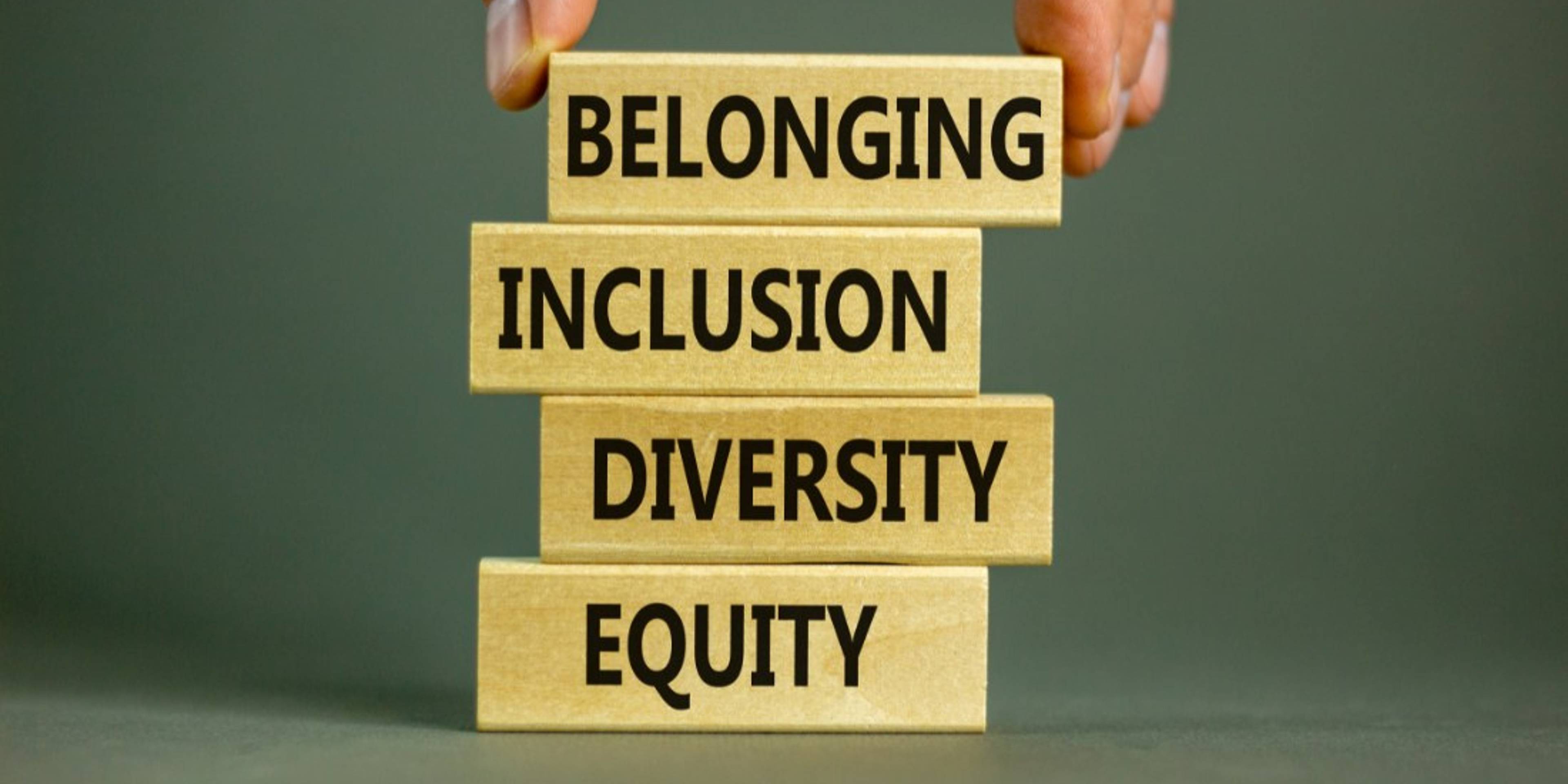December 16, 2022
What is school like for gender-diverse teens in the UK?

A growing number of adolescents are using a number of different identities to describe their gender. Research consistently shows that gender-diverse teens experience worse mental health than either their gender-conforming counterparts or other members of the LGBTQ+ community and that they experience high levels of bullying, are more likely to self-harm and have higher rates of suicidal behaviours. Existing research indicates that gender inclusive approaches are better for the mental health of gender-diverse young people. However, there has been minimal research in the UK on gender-diverse adolescents’ school experiences.
Our Researcher of the Month, Dr Susie Bower-Brown and co-authors, sought to assess the school experiences of binary-trans, non-binary and gender-questioning teenagers in the UK, gaining insight into how these students navigate school life.
Summary
Data for Dr Bower-Brown’s study was gathered through a survey created in conjunction with Stonewall. The survey was available online and on paper and was open to young people (aged 11-19) who identified as LGBT and lived in England, Scotland or Wales. It gathered over 3000 responses. This paper focused on respondents aged 13-17 who identified as gender-diverse. Dr Bower-Brown sought to establish how young people with different gender identities might have different experiences, rather than focusing on ‘gender-diverse’ as a singular umbrella term.
The young people in the study noted that they experienced high levels of challenge within the school environment. These mainly related to four key areas: the curriculum, school spaces, peers and teachers.
Some young people described feeling invisible in the school environment, noting that LGBTQ+ identities were frequently not mentioned at all within the curriculum. Participants suggested that if LGBTQ+ issues were mentioned, education was mostly limited to “mild homophobia” and tended to focus on lesbian and gay identities.
Single sex spaces were considered particularly difficult, though the experiences of binary-trans students tended to differ to those of non-binary and gender-questioning students. Participants described how schools often don’t have spaces (toilets or changing rooms) which explicitly include gender-diverse young people. Non-binary and gender-questioning in particular frequently didn’t feel confident or comfortable within either male or female spaces. Binary-trans participants often described feeling a sense of otherness.
Participants expressed how peers’ and teachers’ reactions to their identity were important in determining their school experience. They noted that a lack of understanding and bullying were common, both online and in person. This commonly included inappropriate language and comments and sometimes involved physical or sexual assault.
To navigate daily school life, participants in the study described using various coping strategies. Negotiating disclosure about their gender identity and seeking to control public information was found to be a key and constant factor. Many of the young people sought to reframe negative experiences to minimise impact on their wellbeing. Proactive protection, such as seeking out other LGBTQ+ people and allies, creating communities and engaging in activism was generally described as particularly effective in improving their school experience.
Implications
“Supportive and inclusive policies that precede adolescents’ coming out have the potential to reduce the burden on individual students.”
It’s important to acknowledge that gender identity can feel a challenging issue to negotiate for many school staff. However, participants in the study expressed that teachers have a unique authoritative power to either help or hinder them. Schools might consider leaning in and asking pupils about their experiences. Students described feeling positive when teachers listened to their needs or started initiatives such as LGBTQ+ clubs. Proactively talking to students in your own school community and looking at bespoke support appropriate to their needs is likely to be beneficial. Should a student confide in you about their gender identity, listen to them without judgement, be alert to signs of distress and provide them with good-quality information and support if they need it.
Be extremely mindful of the language that is used around the school, by both pupils and staff, and foster an environment that embraces diversity in all forms. Ensure that your anti-bullying policy includes clear guidelines on LGBTQ+ discrimination. Ideally, your policy will take a whole-education approach and be written in conjunction with the entire school community, including parents and students. Tooled Up subscribers can listen to our podcast with Professor James O’Higgins Norman to learn more.
Based on participants’ experiences, proactive protection appeared to be the most effective strategy for navigating the school environment. Initiatives such as LGBTQ+ groups and inclusive curricula are important. Assessing school climate and obtaining pupil voice on the impact of issues including curriculum content and single sex spaces could give schools greater insight into improving the experiences of gender-diverse teens.

Dr Susie Bower-Brown
Lecturer in Social Psychology at the Thomas Coram Research Unit
Dr Susie Bower-Brown is a Lecturer in Social Psychology at the Thomas Coram Research Unit, UCL. As a qualitative social psychologist, Susie’s research takes an interdisciplinary approach to exploring gender, LGBTQ+ identities and the experiences of parents and children within diverse family forms. Prior to joining UCL, Susie was based at the Centre for Family Research at Cambridge University and completed her PhD research with Professor Susan Golombok, looked at the social experiences of trans and non-binary parents and the school experiences of gender-diverse adolescents. Susie is on the Editorial Board for LGBTQ+ Family: An Interdisciplinary Journal and regularly speaks about gender diversity to academic and non-academic audiences.
Dr Susie Bower-Brown
Lecturer in Social Psychology at the Thomas Coram Research Unit
Scroll our research gallery

Jun 17, 2025
Navigating the feed: younger adolescents' reflections on algorithmically curated social media
Our latest researcher of the month, Roxana Pomplun, has investigated the interactions, experiences and perceptions of younger adolescents, aged 11, 12, and 13, with algorithmically curated platforms such as TikTok, YouTube Shorts, Spotlight on Snapchat and Reels on Instagram. These kinds of platforms use algorithms to personalise and tailor feeds, harnessing user data to suggest content that the individual is most likely to be interested in and engage with. As such, young people have little control over what they are seeing in their feeds. Tech companies are not yet required to be transparent about the data that they are collecting, but it tends to include demographic information such as age, gender or location, along with use patterns. Whilst these sites dominate the digital lives of tweens and teens, until now they have received little dedicated research attention, particularly in relation to younger users, with most existing studies focusing on older teens. Whilst we know that most social media platforms have age limits of 13, we also know that many younger children are active users, particularly of algorithmically curated platforms like TikTok and YouTube Shorts. Given that early adolescence is a life phase marked by critical neurological development, identity development and heightened susceptibility to mental health issues, deepening our understanding of how younger adolescents engage with social media is vital. Roxana's qualitative research, where a group of young people eloquently explore their own experiences and perceptions, broadens our knowledge of social media use within an age group that appears increasingly aware of the digital influences shaping their online experiences, yet which is still in need of support to fully navigate these ecosystems.

May 15, 2025
Looking beyond smartphone bans
Over the last year or so, there has been a surge in public concern around smartphones and social media. Banning or restricting children’s access to smartphones and social media has grasped the attention of policy makers, schools and parents. A number of countries, including France, Turkey, Norway, Sweden, and regions of the US and Canada have introduced laws, policies or guidance for schools to ‘ban’ or heavily restrict the use of phones. In the UK, there are proposals to raise the age of ‘internet adulthood’ from 13 to 16, and to ban smartphones in schools. The third reading of a private members’ bill on this topic will be heard in parliament in July. Whilst these bans aim to protect children from harm, recent studies highlight a lack of evidence on their efficacy. Along with a team of international experts, our latest Researcher of the Month, Dr Victoria Goodyear, argues that, in isolation, banning smartphone and social media access fails to equip children for healthy use of technology. She suggests that there is a need to shift debates, policies and practices away from a sole focus on restricting smartphone and social media access, toward an emphasis on nurturing children’s digital skills for healthy technology use, and a rights-respecting approach which is underpinned by age-appropriate design and education.

Apr 22, 2025
Encouraging adventurous play in the preschool years
Tune into our podcast interview with April's researchers of the month here. As well as providing numerous opportunities for exploration, joy, and expression, outdoor and adventurous play - the type of play that allows children to take age-appropriate risks - is associated with a range of positive health behaviours and outcomes. Yes, we're talking about the kind of play that might leave us adults with our hearts in our mouths at times, as children start to disappear up a tree, or engage in a rough and tumble game of chase. But its benefits are wide-ranging and known impacts include increased levels of habitual physical activity alongside better mental health and positive mood. In 2019, Dr Hesketh was involved in the creation of physical activity guidelines in the UK, which explicitly note the importance of outdoor play for children in the preschool age group. We know quite a lot about the play habits of school-aged children, but until now, have had significantly less data on their younger counterparts. Our Researchers of the Month, Dr Kathryn Hesketh and Professor Helen Dodd set out to discover how much time preschool-aged children spend playing in a range of indoor and outdoor spaces, and how adventurously they are playing within them. In the first national survey of play in children of this age, they asked over 1000 parents of two to four year olds about their children’s play habits, finding that, on average, children aged two to four spend around four hours per day (outside of educational settings) playing. Just under 50% of this was spent playing outdoors. Their findings shed interesting light on some inequalities in play, even in the youngest age group, which may exacerbate existing inequalities in health.

Mar 17, 2025
Fostering a school culture against bullying: the KiVa Programme
Bullying is an extremely important public mental health risk. Around one in five primary school children report being bullied at least weekly. Children who are bullied are more likely to experience depression and anxiety, and are at heightened risk of mental health issues in adolescence and adulthood. Whilst schools in England and Wales are required to have anti-bullying policies, rates of bullying remain high. Bullying is preventable, but schools need more help to tackle it. Typically, school policies focus on how to handle bullying once it happens. However, evidence suggests that a comprehensive approach involving the entire school to prevent bullying, alongside clear strategies for addressing confirmed cases, is the most effective way to tackle the issue. KiVa is one such whole-school approach, developed in Finland by Professor Christina Samivalli. A large study in Finland which involved 28,000 primary school pupils found that adopting the KiVa programme in Finnish schools significantly reduced bullying and improved children's mental wellbeing. The programme has since been rolled out nationally by the Finnish government and ongoing use of KiVa in Finnish schools is associated with year-on-year incremental reductions in bullying. Along with colleagues, our researcher of the month, Professor Judy Hutchings OBE, has tested the effectiveness of the KiVa Programme in UK primary schools. The study involved over 11,000 children in Wales, Birmingham, Oxfordshire and Devon, and showed a 13% reduction in reported rates of bullying when compared with existing school approaches to tackle bullying.

Feb 12, 2025
When is the right age? Searching for age-appropriate ways to support children's online lives
Currently, children's and young people’s use of digital technology is rarely out of the news. Age limits are debated. Calls for stronger limits are made, and questions are raised regarding whether society should ban 'under-age' children from various aspects of the digital world. 13 years of age is often cited as a digital 'age of consent', though this varies in some countries. Commonly used age limits are largely arbitrary, based primarily on US legislation, rather than evidence. In a recent paper, our researcher of the month, Dr Kim Sylwander, and her co-author Professor Sonia Livingstone, consider age milestones and evaluate whether or not the evidence supports them. Are age limits the optimal way to regulate children’s digital experiences? Does it matter that they are widely contested and often poorly implemented? And are common boundaries even the “right” age, according to evidence from the field of children and digital media? Dr Sylwander persuasively argues that moving forward, a developmental approach can better support children’s rights.

Jan 14, 2025
Showing faith and trust in children nurtures integrity
A new study which explores the development of trust and integrity in children has found that expressing trust in young children encourages them to behave honesty. The research team, including our researcher of the month, Professor Li Zhao, studied whether children were less likely to cheat in a simple test of counting accuracy if the adult administering the test had previously conveyed trust in them. They found that children who were trusted cheated less than those who were not trusted. These findings provide novel evidence about the causal effect of trust on the development of children's honesty.

Dec 17, 2024
Intrinsic reward and word learning
From infancy onwards, humans display an innate motivation to acquire language and to communicate. We start acquiring words as babies and continue to do so throughout our lives. In fact, children are thought to learn over 3000 new words each year. However, relatively little work has focused on why we are motivated to learn words, particularly when it comes to adolescents. Adolescence is a period of great neurological change and sensitivity to learning. It's also marked by changes in reading behaviours. Whilst children become skilled readers between the ages of 10 and 18, this period is also associated with motivational changes in reading, with teens frequently showing a disinclination to read for pleasure. This change often coincides with the transition from primary to secondary school. Policy makers are keen to motivate adolescents to read for pleasure, arguing that it would improve not just literacy outcomes, but also result in substantial economic and societal benefit. Recent research has shown that adults find learning words to be intrinsically rewarding, and that this intrinsic reward facilitates the entrance of new words into long-term memory. In their latest paper, our researchers of the month, Professor Saloni Krishnan and Professor Pablo Ripollés, set out to establish whether the same is true for children and teens.

Nov 14, 2024
Delivering effective menstrual education
Research has shown that menstruation and menstrual cycle symptoms can be disruptive and detrimental to physical, mental and social wellbeing. As many as 93% of teen girls experience dysmenorrhea (severe cramps) and girls with a typical cycle experience 11 menstrual cycle-related symptoms on average, potentially including mood changes, stomach cramps and increased levels of anxiety and fatigue. Adolescents with problematic symptoms have reported a negative impact on school attendance, behaviour, confidence around peers and participation in physical activity. In the United Kingdom, evidence suggests that menstrual health education delivered by teachers generally focuses on menstrual cycle biology, as opposed to management of menstruation and menstrual cycle related symptoms. Our latest researcher of the month, Dr Natalie Brown, set out to understand young people’s perceptions of menstrual education in schools and their experiences of menstruating whilst at school, including within physical education. Her study involved nine focus groups with 10-15 year old female pupils attending primary and secondary schools across England and Wales. Pupils highlighted that, in their experience, menstrual education is limited and noted that the menstrual cycle impacts negatively on their school experience, affecting participation in sport and school attendance generally. Participants highlighted a need for more support and information regarding understanding and managing periods in school.

Oct 17, 2024
How influential is social media on young people's mental health?
A significant body of evidence tells us that young people's mental health has decreased over time, and a potential link between social media use and this mental health decline has triggered wide interest and concern. Research into social media use and mental health is being conducted at a rapid pace but, so far, findings are far from conclusive. Our new Researcher of the Month, Dr Margarita Panayiotou, adds to this body of work. She led a team of researchers who recently published a study involving thousands of young people in the UK. It set out to explore the interplay between social media use and teens' mental health, wellbeing and social life, and found that when considering the complex combination of multiple factors, things such as a lack of family support are arguably more important for adolescent mental health than social media use.

Sep 16, 2024
How do young children’s relationships with parents and teachers impact their adjustment to school?
We already know that children's relationships with their parents and teachers contribute to their school adjustment and achievement, and that positive, close relationships with adults are really important for a wide variety of children’s outcomes. However, few studies have examined interactions between these relationships or sought to address the nuances of children’s experiences in terms of how different relationships have different impact or influence. To address this, along with colleagues, our new Researcher of the Month, Dr Caoimhe Dempsey, has recently published an article which aims to examine the links between children's relationships with their mothers, fathers and teachers, and three domains of school adjustment: academic achievement, academic self-concept and behavioural adjustment in the classroom. By examining a range of data, the researchers sought to find out whether some children are more susceptible to the effects of the quality of their relationship with their teacher.



